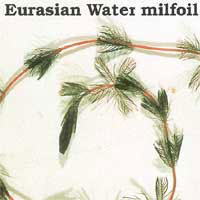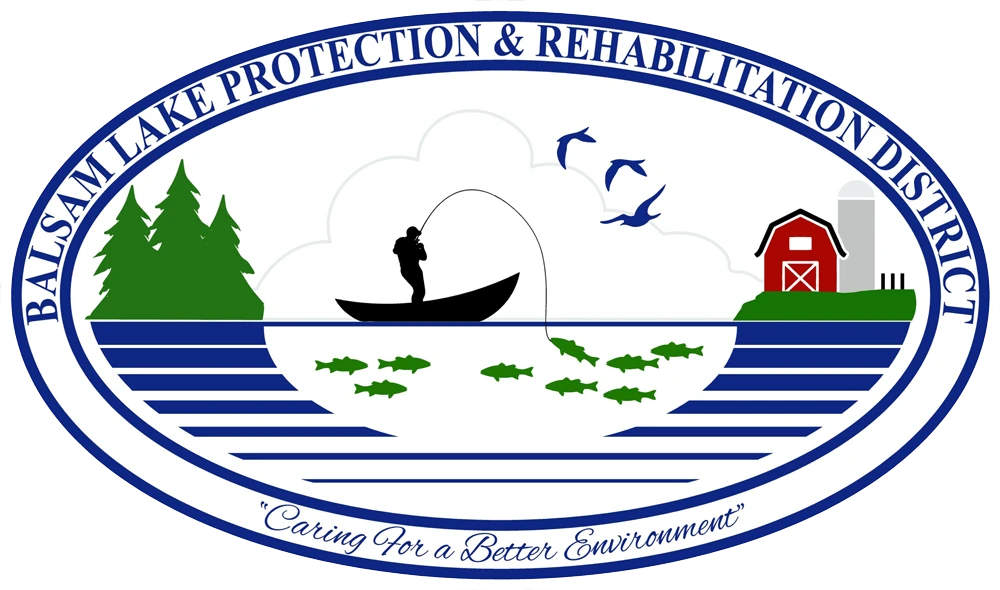Eurasian Water Milfoil (EWM), Myriophyllum spicatum, is becoming a serious threat to Polk County’s Lakes. EWM first arrived in Wisconsin in the 1960’s from Europe, Asia, and North Africa. During the 1980’s, it began to spread from its central location in the southern part of the state, to the northern part of the state. Growing as an aquatic plant, EWM can be recognized by its slender stems and whorls of leaves. The leaves are generally uniform in diameter, and are pinnately compound, with 12 to 21 long, straight segments per side. These leaflets are limp when out of water. EWM is sometimes confused with Northern Water Milfoil, a native plant that has 5 to 10 leaflets and is rigid out of water. Unlike many other plants, EWM doesn’t rely on seed for reproduction. Although its seeds germinate poorly under natural conditions, EWM can reproduce successfully by means of fragmentation, allowing it to disperse over long distances. In this way, EWM is readily spread by boats, motors, trailers, live wells, or bait buckets, and can stay alive for weeks if kept moist. EWM stands may inhibit recreation on waterways, including swimming, boating, and fishing. The cycling of nutrients from sediments to the water column by EWM may lead to deteriorating water quality and may promote algae blooms on infested lakes, thereby creating additional problems for humans and animals.
Preventing EWM involves efforts by those that live on and off the lake. These efforts include: 1) Increasing public awareness of the necessity to remove plant fragments at boat landings to keep the weed from infesting new lakes, 2) Protecting native plant beds from being disturbed, 3) Implementing a watershed management program to keep nutrients from reaching lakes and stimulating milfoil colonies. Lake managers, boaters, and lake residents should check for new colonies and have them controlled before they spread. When control measures are implemented, it is imperative that all fragments be removed from the water and the shore to prevent re-infestation.

EWM can be controlled in the following ways:
1. Biological Control - The most effective control method so far is to use the Milfoil Weevil. These little weevils lay their eggs in the stems of the milfoil and when the larvae hatch, they eat the milfoil, causing damage.
2. Chemical Control - Chemical herbicides can be applied to Eurasian Water Milfoil every one to three years to control its growth. But since Eurasian Water Milfoil is similar to our native milfoil, the herbicides can often kill the native plants.
3. Mechanical Control - This involves pulling out or cutting the EWM with a machine and removing it from the water. This type of control must be repeated all summerbecause the EWM usually comes right back.
For more information:
http://co.polk.wi.us/landwater/exotic_species.htm or
Polk County Land & Water Resources Department (715) 485-8699
